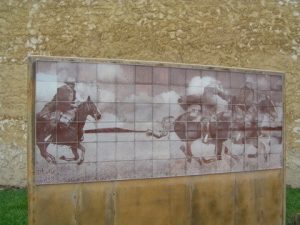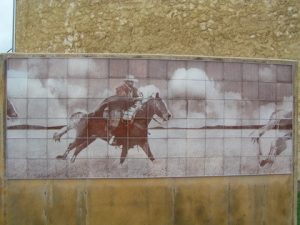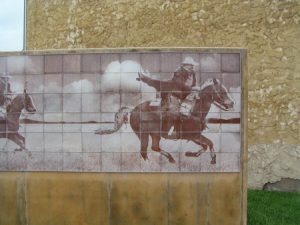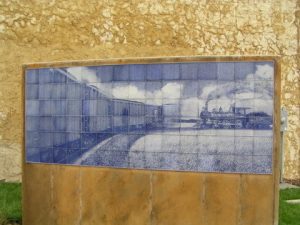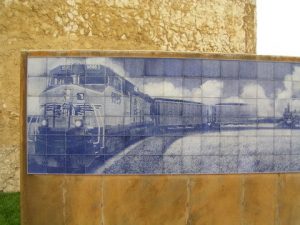Although the Pony Express only operated for a short time – the Express used a fleet of skilled horseback riders to deliver mail and parcels from St. Joseph, MO to Sacramento, CA, from spring 1860 to fall 1861 – it remains a proud symbol of American ingenuity, strength and vitality, as well as westward U.S. settlement. From St. Joseph to Stateline, NV, statues pay tribute to the valiant Pony Express riders and their mounts.
Marysville, KS, officials chose a unique format to pay tribute to its legacy as a Pony Express stop. When the Union Pacific Railroad uprooted railroad tracks from downtown Marysville, the city seized the opportunity to also honor that part of its heritage. The city commissioned the development of two, motion-simulating murals that were installed in a park over the former site of the railroad tracks.
Wyatt Thompson, an architect for Schwab Eaton, a Manhattan, KS-based architectural firm that developed the new Marysville park, recommended artist Rufus Seder to Rick Shain, Marysville’s city administrator. Seder creates Lifetiles murals, which incorporate lens-ribbed, glass tiles that capture light and make artwork appear to move when the viewer moves in front of the mural. He’s fabricated Lifetiles, which have been installed from Los Angeles to Greece, since 1990.
Advertisement
“I try to capture the subject’s movement,” Seder said. “I want the observer to see the motion. I decided I liked the idea of creating murals that appear to move without any electricity or moving parts.”
To create the 90-tile graphics (each tile measures 8 in. sq.), Seder, a former filmmaker, first photographed Dan Koch, a costumed, horseback Pony Express re-enactor, and a scale-model Model 119 1861 steam-engine locomotive and its modern, diesel counterpart. He included both to symbolize the progress of railroad technology. Then, using proprietary digital techniques, he compressed artwork into coded images. Finally, Seder contracts with an industrial kiln operator to bake the tiles at 1,100° F, which embeds the ink to create the image and make them resistant to the elements. For outdoor installations, he installs them to stainless-steel panel backers. Seder installed the murals within precast, concrete fixtures.
“For every installation, I scale the installation to the viewing distance and the best angle for the motion to happen,” Seder said. “Fortunately, Marysville installed sidewalks that will allow viewers to see the mural from roughly 10 ft. away, which would allow the viewer to see the mural’s motion with every step.”
Shain enthused about Seder’s work: “There’s no other public-art project like this in Kansas. I saw a video of Rufus' work and was sold at once. The murals represent two modes of transportation that played vital roles in the development of Marysville. We're in the process of obtainting funding for a third mural that will feature a series of Marysville's historic places and events.”
Advertisement
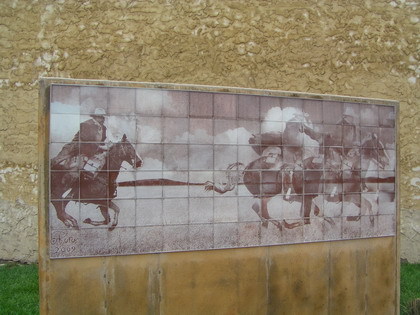

 Photo Gallery5 days ago
Photo Gallery5 days ago
 Tip Sheet2 weeks ago
Tip Sheet2 weeks ago
 Ask Signs of the Times7 days ago
Ask Signs of the Times7 days ago
 Paula Fargo2 days ago
Paula Fargo2 days ago
 Real Deal2 weeks ago
Real Deal2 weeks ago
 Benchmarks1 week ago
Benchmarks1 week ago
 Photo Gallery2 days ago
Photo Gallery2 days ago
 Women in Signs2 weeks ago
Women in Signs2 weeks ago
